You found our list of the best training and development books!
Training and development books are guides that teach best practices for onboarding and educating employees. These books cover topics such as course design and delivery, learning evaluation, and performance reviews. The purpose of these books is to streamline the process of teaching staff new procedures, concepts, or skills. These works are also known as “learning and development books.”
These guides are a subset of HR books, and are similar to books on coaching. The tips found in these works can help you to do successful employee onboarding.
This article includes:
- HR training and development books
- staff training and development books
- manager training and development books
- talent development books
- books about training employees
Here we go!
List of training and development books
Here is a list of informative books about training employees that help companies design highly effective modules and programs.
1. Employee Training & Development by Raymond Noe
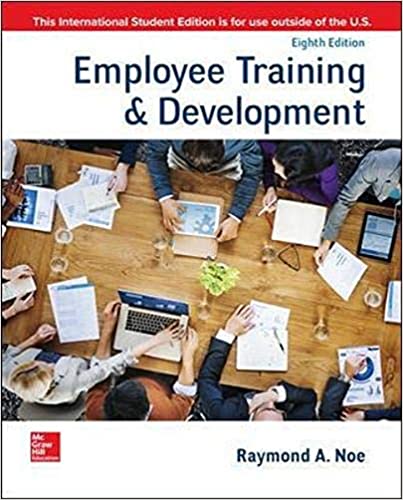
Employee Training & Development is one of the most widely-used training textbooks. The book teaches management students how to design and administer effective training programs. These programs equip employees with the skills and knowledge needed to perform jobs exceptionally well. The ultimate goal of this instructional manual is to optimize the training process, elevate employee performance, gain a competitive edge, and achieve a return on the investment put into creating courses. Employee Training & Development touches on various training methods such as in-person seminars, online classrooms, and collaborative learning, making it one of the most comprehensive manager training and development books.
Buy Employee Training & Development.
2. 75 Ways for Managers to Hire, Develop, and Keep Great Employees by Paul Falcone
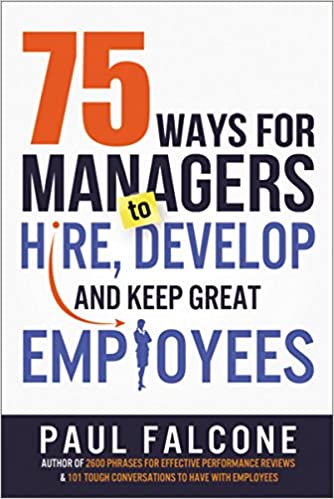
75 Ways for Managers to Hire, Develop, and Keep Great Employees teaches readers how to manage every stage of the employee lifecycle from the first interview to the exit interview, and every possible situation in between. The book lays out strategies for dealing with various scenarios like performance evaluations, terminations, underperformance, and burnout. Paul Falcone explains techniques to motivate and educate staff through strategic leadership. By following these tips, readers can unlock teammates’ full potential, shape staff into ideal employees, and create optimal work environments.
Notable Quote: “Transitioning new hires into your company has multiple cascading events that take place over time– for the leader, for the new hire, and the organization. Much more than merely enrolling people in benefits and setting up their payroll, it’s your first chance to make a good impression and truly integrate the individual into your culture.”
Buy 75 Ways for Managers to Hire, Develop, and Keep Great Employees.
3. Bridging the Soft Skills Gap: How to Teach the Missing Basics to Today’s Young Talent by Bruce Tulgan
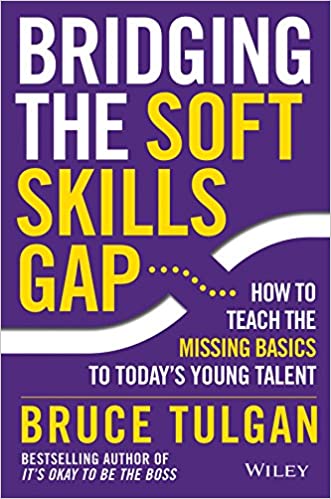
Bridging the Soft Skills Gap explains how to nurture workers’ people skills. The book argues that younger generations have technical prowess but often lack soft skills such as conflict resolution, communication, and teamwork. Furthermore, different generations tend to have varying standards of professionalism, and younger workers’ failure to conform to existing corporate culture can harm their careers. Bridging the Soft Skills Gap presents time and research tested methods for teaching millennials and Gen-Zers abilities like interpersonal communication and stress management. The book includes activities and exercises to help readers teach these crucial capabilities.
Notable Quote: “There is a growing gap between the expectations of employers and the reality of how today’s new young talent is showing up in the workplace….What they are missing–way too often and more and more– is the old-fashioned basics, what many refer to as “the soft skills.”
Buy Bridging the Soft Skills Gap.
4. The Six Disciplines of Breakthrough Learning: How to Turn Training and Development into Business Results by Roy V. H. Pollock, Andy Jefferson, and Calhoun W. Wick
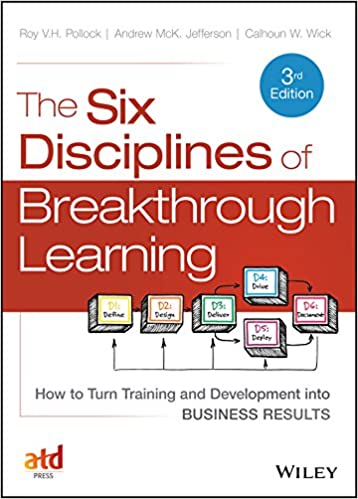
The Six Disciplines of Breakthrough Learning provides a framework for professional training. According to the authors, the six disciplines are as follows:
- Define
- Design
- Deliver
- Drive
- Deploy
- Document
By following these core principles, leaders can create successful corporate learning programs that result in meeting business objectives. Each chapter breaks down a discipline, providing helpful figures, bulleted lists, and concrete examples. The Six Disciplines of Breakthrough Learning helps instructors map out and facilitate effective lessons while also teaching students how to gain the most from these sessions.
Notable Quote: “Actually, managers do care about training, but only to the extent that it helps improve performance….In a corporate setting, learning matters only if it meaningfully contributes to achieving the organization’s mission and goals. This is why effective organizations practice the First Discipline: they define the business outcomes before they embark on any learning initiative.”
Buy The Six Disciplines of Breakthrough Learning.
5. Training & Development For Dummies by Elaine Biech
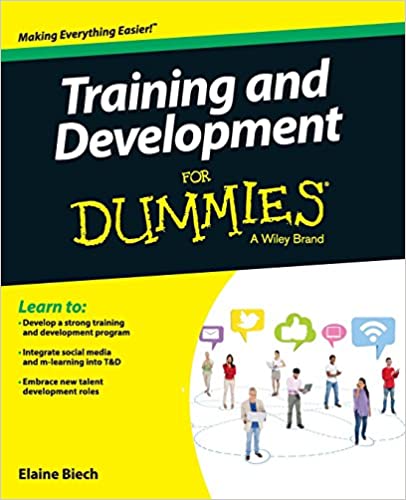
Training & Development For Dummies is the ultimate employee education handbook. The guide breaks the process of professional instruction into simple, easy-to-understand components like designing, delivering, and evaluating training sessions. Eliane Biech covers topics like the training cycle, the role of technology in education, showmanship, and addressing issues like disruptive participants. The book also touches briefly on webinars and remote learning. Training & Development For Dummies is one of the most accessible books on development.
Notable Quote: “Training is a process designed to assist an individual to learn new skills, knowledge, or attitudes. As a result, individuals make a change or transformation that improves or enhances their performance. These improvements ensure that people and organizations are able to do things better, faster, easier, and with higher quality.”
Buy Training & Development For Dummies.
6. Design Thinking for Training and Development by Sharon Boller and Laura Fletcher
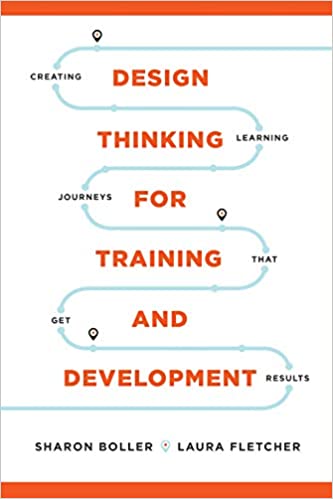
Design Thinking for Training and Development applies the design approach to the learning and development process. This book champions a human-centered approach to course building. The authors invite readers to devise curriculum the way one might devise a product prototype, with the intent of sparking interest and making the end result as user-friendly as possible. The book follows the product development cycle, relating each step in the process to the journey of delivering the perfect professional lesson.
Notable Quote: “Our industry tends to think first about creating courses and workshops instead of recognizing learning as a journey that involves many steps and stages. The experiences we have at each stage of the journey either propel us forward or cause us to exit. We spend billions of dollars each year on training solutions without significant success stories to share in terms of results or rave reviews from learners. That’s a problem if people opt out of the journey or the journey leads to nowhere. When that happens, we have failed our learners and our organizational needs.”
Buy Design Thinking for Training and Development.
7. The Art and Science of Training by by Elaine Biech
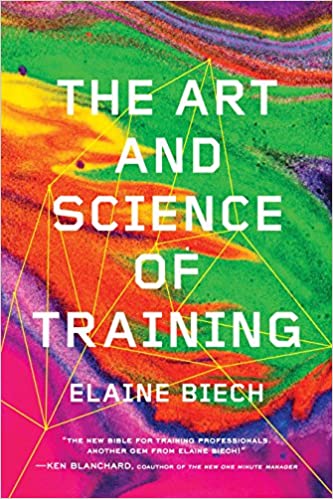
The Art and Science of Training explores the creative and logical aspects of professional development. The book imagines the practice as both a science and an art and teaches instructors how to maximize the impact of lessons inside and outside the classroom. Training expert Elaine Biech breaks down instruction into core components like designing lessons around students, mastering technology, and aligning content with organizational standards. The book also teaches facilitators how to handle difficult situations like stubborn students or technical glitches.
Notable Quote: “It seems that to truly facilitate learning for others, trainers must understand them first; learning comes after that. Trying to impart knowledge without thoroughly understanding the learner is like venturing into enemy territory without first doing reconnaissance. Success happens because you understand others; it’s not from understanding the content.”
Buy The Art and Science of Training.
8. Telling Ain’t Training by Harold D. Stolovitch and Erica J. Keeps
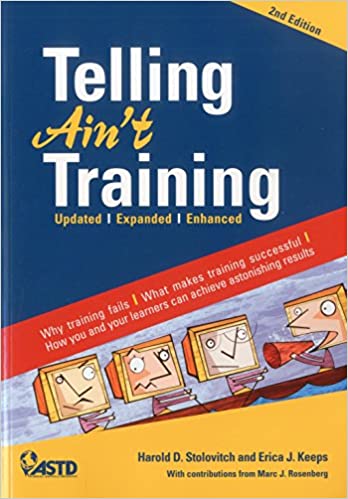
Telling Ain’t Training is one of the most beloved staff training and development books of all time. The book uses a humorous and conversational tone to cover the common mistakes of corporate training. By examining the common pitfalls and misconceptions of professional training, the book uncovers ways to deliver clear and effective instruction. The sections and chapters outline basic elements of development like learning conditions, teaching best practices, facilitator tools, and the nuances of adult education. The text follows the education principles it preaches by providing illustrated examples and exercises that help readers engage with the material.
Notable Quote: “In the workplace, time and budget pressures force us to focus on how quickly we can produce, implement, and deliver training. The critical measures of success become how fast we delivered, how little it cost, and how many bodies we put through the training pipeline. Where we seriously fall down is on measuring how well the people we trained learned to perform as desired and were able to execute successfully back on the job.”
9. The Talent Code: Greatness Isn’t Born. It’s Grown. Here’s How. by Daniel Coyle
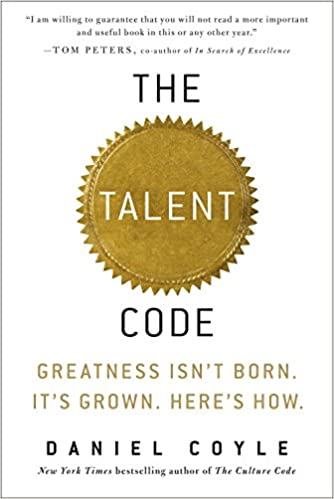
Daniel Coyle wrote The Culture Code, which is on our list of the best books on company culture. In The Talent Code, Coyle insists that ability is developed, not discovered. The book explores case studies of concentrated talent, such as the number of baseball stars originating from the Caribbean or the three Brontë sisters emerging from a single household.
The research points to a three-pronged system for developing extreme skill: ignition, deep practice, and master coaching. The narrative does not focus specifically on professional talent, choosing to explore the world of ability and learning at large.
The Talent Code teaches readers how to unlock their own potential and unleash potential in others by following this simple formula, making this work one of the best talent development books available.
Notable Quote: “Deep practice is built on a paradox: struggling in certain targeted ways–operating at the edges of your ability, where you make mistakes–makes you smarter.”
Buy The Talent Code.
10. Workplace Learning (How to Build a Culture of Continuous Employee Development) by Nigel Paine
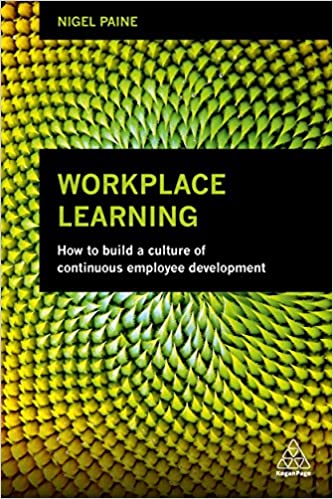
Workplace Learning is one of the most useful HR training and development books because the guide teaches human resources staff how to nurture a culture of learning. In an ideal office, development does not come solely from the human resources department. Instead, workers continually learn and upskill in the course of the job. The result is a more agile and dynamic workforce that is not afraid to take risks and change. The book mentions case studies of companies with solid learning cultures and explains how leaders can recreate these atmospheres. Workplace Learning clearly lists the conditions HR leaders and managers must create to build workplaces where employees gladly learn and help colleagues learn.
Notable Quote: “‘Building a culture of learning’ does develop agile staff who have a collaborative mindset and a willingness to share. These are the by-products of the process. Staff focus more on what needs to be done and admit what they do not know and seek help to get things right.”
Buy Workplace Learning.
Conclusion
Trainers need training too. Development books provide the knowledge and skills instructors need to educate fellow professionals. By reading books in this genre, leaders can learn how to nurture talent and build skills. These guides also outline possible classroom scenarios to better prepare facilitators to overcome unexpected hurdles. Knowledge gained from these books builds a strong foundation that gives facilitators the confidence and know-how to inform the workforce.
For more reading resources, check out these lists of organizational behavior books, office management books and onboarding books.
